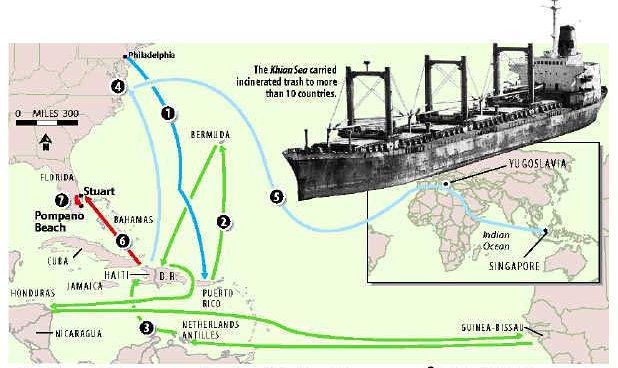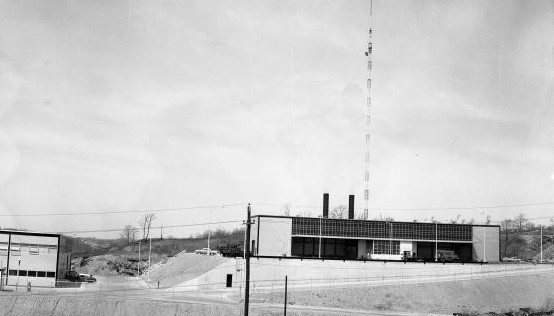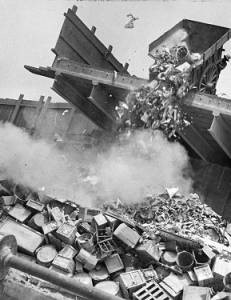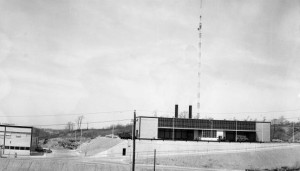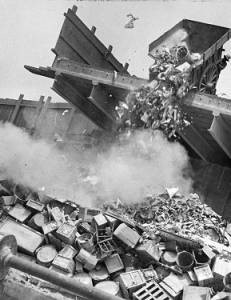Garbage Barge (Khian Sea)
By Mark Jaffe
Essay
During the 1980s, as regional landfills closed, it became increasingly difficult for Philadelphia to find places to put its trash and the ash from burning that trash. This dilemma became a global odyssey when the city loaded about 15,000 tons of municipal ash on a ship, the Khian Sea, and sent it off to the Bahamas in August 1986. The voyage proved to be only the first step in a long journey for the ash and the “garbage barge.”
Philadelphia’s disposal problem began in 1984 after Gloucester County, New Jersey, blocked outside dumping from its Kinsley Landfill, which had been taking more than forty percent of the city’s trash. Ash from Philadelphia’s two municipal incinerators started piling up after another landfill, near Baltimore, failed to meet Maryland environmental standards and closed.
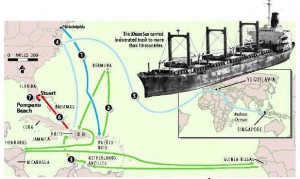
When Philadelphia loaded the ash aboard the Khian Sea, it was to be taken to the Bahamas and used as fill. Before the ship reached its destination, however, concerns raised by environmental groups about the toxicity of the ash scotched the plan. With the ash still aboard, the Khian Sea embarked on a two-year journey across eleven countries and four continents. The ship was turned away at gunpoint at two ports, the crew almost mutinied, and its engineer threatened to scuttle the vessel and was also tossed into jail. Ultimately, the Khian Sea dumped more than 2,000 tons in the remote Haitian port of Gonaives before being ordered out of that country. When the ship, renamed the Felicia in the hope of escaping the Khian Sea’s notoriety, arrived in Singapore in November 1988, its cargo had mysteriously disappeared.
The pariah ship changed its name several more times–to the Pelicano, then the San Antonio–by the time it was detained by federal officials in October 1989. In a 1993 federal court case the ship’s captain, Arturo Fuentes, testified that the crew used a front-end loader to dump the ash from Philadelphia overboard, part of it in the Atlantic Ocean and part in the Indian Ocean. Two Annapolis, Maryland, businessmen, who operated the ship, were convicted of perjury for lying to a grand jury investigating the case and went to jail.
The local firm contracted by Philadelphia to haul the ash, Joseph Paolino & Sons, which had been blocked from disposing of the waste in landfills in West Virginia and South Carolina before turning to the Khian Sea, was eventually acquired by Waste Management Inc. of Houston, Texas. Waste Management repatriated the last remnant of the Khian Sea’s cargo–the ash pile in Gonaives, Haiti. The federal Environmental Protection Agency and the Pennsylvania Department of Environmental Resources both tested the ash pile and ruled it non-hazardous.
The 2,345 tons of ash were moved to a hopper barge in Stuart, Florida, and sat there for two years. When it appeared that a Waste Management landfill in Louisiana might be the ash’s final resting place, the Louisiana Senate passed a resolution, 25-1, calling for banning the ash from the state.
In the spring of 2002, the ash was shipped by rail to Hagerstown, Maryland, and then trucked to the Mountain View Reclamation landfill in south-central Pennsylvania. “There is no happy ending to the story,” said Lisa Finaldi, national coordinator the toxic campaign of the environmental group Greenpeace. “Hopefully there was a lesson learned from this and we can do better at managing household waste in this country.” Philadelphia taxpayers never had to pay the $630,000 to dispose of the ash because the contract required it to be disposed of legally.
By 1990, Philadelphia had closed its municipal incinerators and instituted a citywide recycling program to cut the volume of landfill waste. In response to the tight market, new landfill capacity opened in Pennsylvania easing the city’s problems. Among big cities Philadelphia’s problem was not unique. After New York City closed its Fresh Kills Landfill in 2001, it had to ship its solid waste to landfills in Pennsylvania, Ohio, Virginia, and South Carolina. While Philadelphia did find places to put its trash, the costs of disposal between 2000 and 2014 doubled to $140 per ton and was projected to reach a total of of $367 million a year by 2016.
Mark Jaffe covered the story of the Khian Sea while a reporter for the Philadelphia Inquirer. He also covered energy issues for the Denver Post. (Author information current at time of publication.)
Copyright 2016, Rutgers University
Gallery
Backgrounders
Connecting Headlines with History
